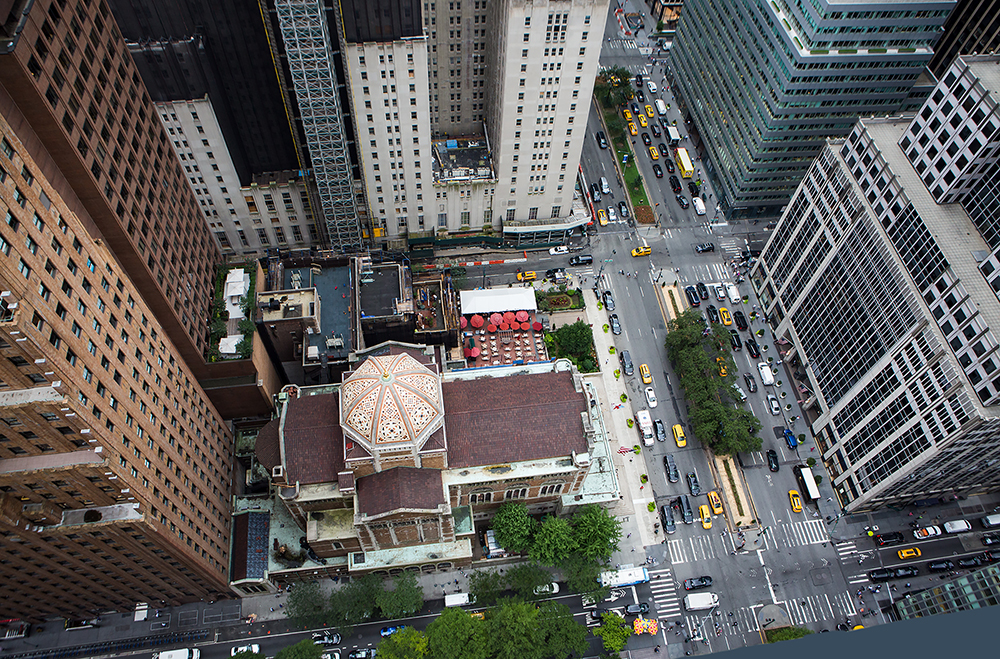
This church, like all our other churches, whatever their style, should possess more space than our great American cities permit. It should not be elbowed and jostled by great apartment houses, but should rise through the greenery of trees and flowers. (From “The Proposed New St. Bartholomew’s” by Bertram G. Goodhue, The Architect. January 16, 1915.)
The so-called “Great Terrace” lies between the south side of the Church and the west façade of the Community House. An expansive red quarry tile and bluestone raised piazzetta that doubles as the roof of the Community House athletic facilities and in warm weather, accomodates the outdoor dining area of the popular restaurant Inside Park, celebrated by the New York Landmarks Conservancy for its creative use of an historic urban space. The bluestone steps leading up to the Great Terrace from Park Avenue are flanked by gardens, which date from 1927 and have been lovingly maintained by generations of volunteers.
On the north side of the Church there is also a small evergreen garden known as the “Cheatham Garden.” Designed by Landscape Architect Paschall Campbell (1930-2003) in collaboration with the architectural firm Hamby, Kennerly, Slomanson & Smith, it was given by Owen Robertson Cheatham in memory of his mother, Sallie Franklin Cheatham and completed in 1972. A series of evergreen planted platforms originally with water flowing through now gravel-filled channels, it surrounds the north transept entrance to the Church, which Goodhue designed as a way for the aged and handicapped to enter the building and access the communion rail without climbing a single stair.
Although none of the gardens was actually designed by Goodhue, they are consistent with his view that the St. Bartholomew’s site should "rise through the greenery of trees and flowers.” Today, the gardens provide an oasis of beauty and calm adjacent to the heavily trafficked Park Avenue sidewalk.

